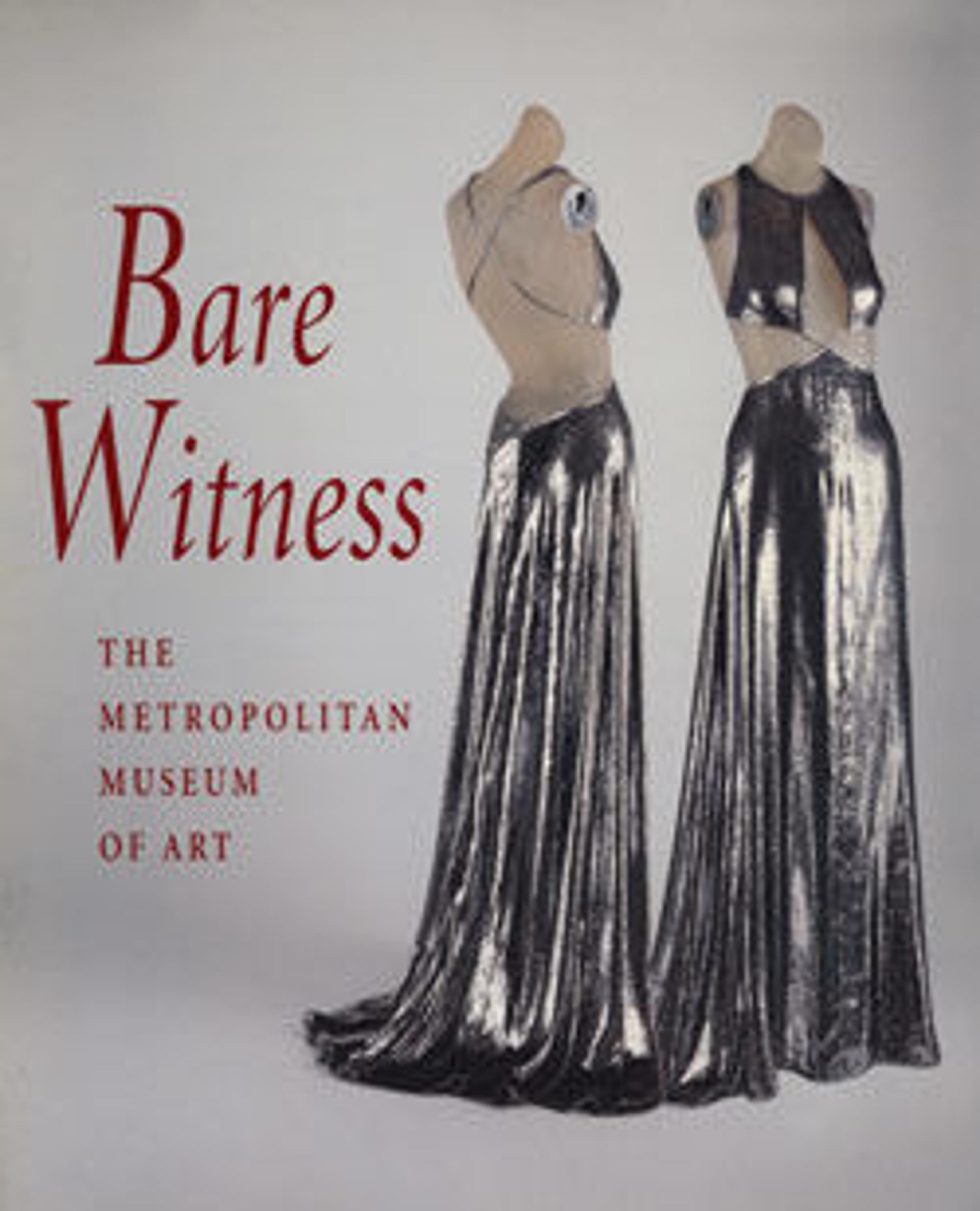Cocktail ensemble
By the late 1960s, modular shapes had been integrated into every arena of design, from furniture to appliances to clothing. The rather ambiguous romanticism of the previous decade was gone; in place of the decorative hourglass shape emerged a slimmer, more columnar silhouette that took precedence with designers like Hubert de Givenchy, Pierre Balmain, and especially Yves Saint Laurent. The cocktail and evening garments of the 1960s seemed to echo those of the 1920s, whether as a reaction to the heavy decorations of the 1950s, or as nostalgia for the sheaths dictated by wartime regulation.
Executed in an understated wool bouclé, as was the fashion for couture of the five o'clock hour, this ensemble evokes a sociable tone with an evening silk grosgrain trim and peek-a-boo midriff cutouts at right and left sides. With a high boat neckline, the two-piece dress could be worn with a cropped jacket for an afternoon tea, or with long white or black gloves to attend a cocktail affair in the early evening.
Black was always appropriate for the cocktail hour. Since the 1920s, black wool crepes, jerseys, and silk failles were employed in simply cut patterns for daytime, and then dressed up over the decades with cloche, cartwheel, or crown hats, or Swiss-dot net snoods. By the time this dress was created, cocktail accessory manufacturers were already looking to revive some of the styles from the flapper era; a '60s-modern pillbox hat could be dressed for cocktails with the revival of the pheasant plumes or rhinestone pin of the 1920s dance hall.
Executed in an understated wool bouclé, as was the fashion for couture of the five o'clock hour, this ensemble evokes a sociable tone with an evening silk grosgrain trim and peek-a-boo midriff cutouts at right and left sides. With a high boat neckline, the two-piece dress could be worn with a cropped jacket for an afternoon tea, or with long white or black gloves to attend a cocktail affair in the early evening.
Black was always appropriate for the cocktail hour. Since the 1920s, black wool crepes, jerseys, and silk failles were employed in simply cut patterns for daytime, and then dressed up over the decades with cloche, cartwheel, or crown hats, or Swiss-dot net snoods. By the time this dress was created, cocktail accessory manufacturers were already looking to revive some of the styles from the flapper era; a '60s-modern pillbox hat could be dressed for cocktails with the revival of the pheasant plumes or rhinestone pin of the 1920s dance hall.
Artwork Details
- Title:Cocktail ensemble
- Design House:Yves Saint Laurent (French, founded 1961)
- Designer:Yves Saint Laurent (French (born Algeria) Oran 1936–2008 Paris)
- Date:fall/winter 1965–66
- Culture:French
- Medium:silk, wool
- Credit Line:Gift of Jane Holzer, 1977
- Object Number:1977.115.17a, b
- Curatorial Department: The Costume Institute
More Artwork
Research Resources
The Met provides unparalleled resources for research and welcomes an international community of students and scholars. The Met's Open Access API is where creators and researchers can connect to the The Met collection. Open Access data and public domain images are available for unrestricted commercial and noncommercial use without permission or fee.
To request images under copyright and other restrictions, please use this Image Request form.
Feedback
We continue to research and examine historical and cultural context for objects in The Met collection. If you have comments or questions about this object record, please contact us using the form below. The Museum looks forward to receiving your comments.
